November 2021
This month we have added many new features to the portal and improved some of the old ones. Let's talk about everything in order.
Task redesign
Remember when we said we were moving to new design? This month, the look and feel of the Tasks section has changed.
The section has become more concise and easier to navigate. For each task, all the necessary information is now briefly displayed - what needs to be done, when, and status of the task.
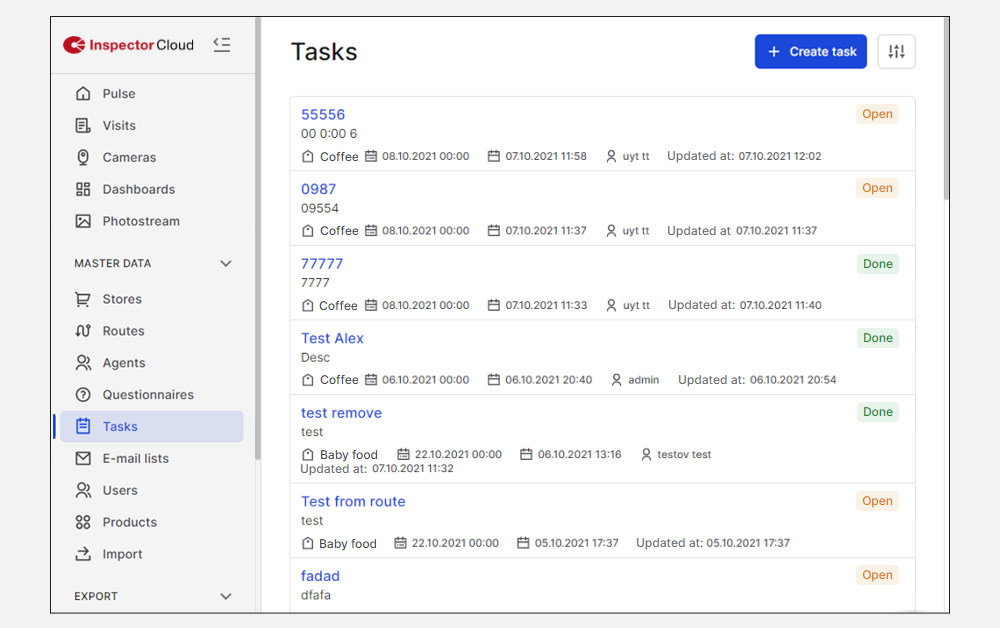
In the task card, information is divided into blocks:
- Information - description of the task, deadlines, settings, and so on;
- Images - images that reflect the essence of the task;
- Questionnaires - questionnaires for employees at the point of sale;
- Shops - points of sale to visit;
- Visits — reflect visits where task completed;
- History — changes by task since creation.
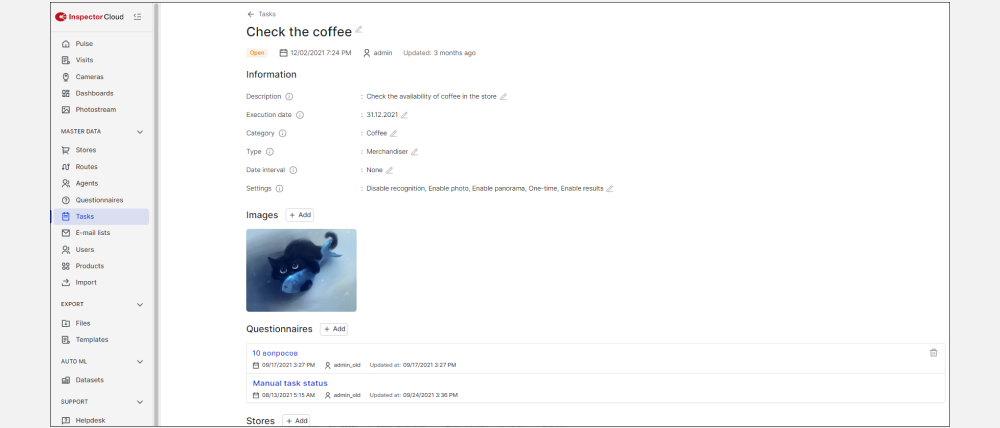
Creating tasks now takes a couple of minutes. Fill in the data, add questionnaires and stores, and specify the settings.
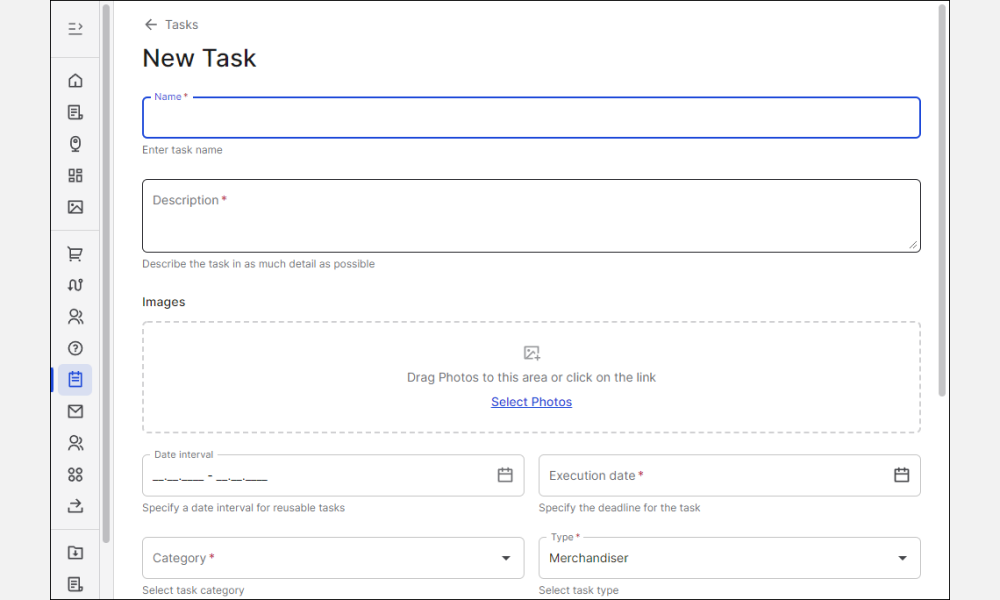
On the next visit to the store, the employee will see the task and be able to complete it.
Cameras
In addition to regular grocery stores, large hypermarkets, and convenience stores, there are retail outlets that are rarely visited by auditors. For example, tobacco shops. We have added Cameras for them.

How it works
A stationary camera with special software is installed at the point of sale.
For example, take the same tobacco shop. A stationary camera with special software is installed in it. She will rent a place of sale, in our case, a cabinet with tobacco products.
The camera takes a photo of the cabinet at a specified interval. The neural network classifier in the system recognizes whether the cabinet is open or closed. If open, the system recognizes products, POSM, and prices.
Every day a new visit will appear on the portal. Photos from the camera will fall into it. After the system analyzes the received data, it will return it to the user - in the session itself or the camera card.
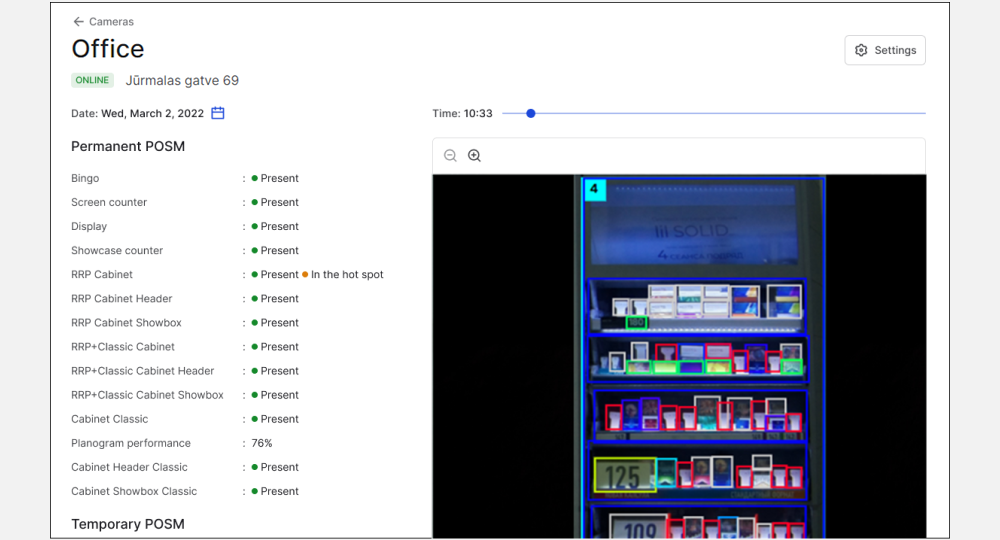
Fraud dataset
The new classifier is gradually bringing results. Previously we trained a new model to detect photo forgery. Now the system distinguishes original photos from forgery from paper media, device screens, or photos not from the point of sale. To do this, a block of datasets was added to the portal. They can be edited, changed and edited to improve recognition.
Tests show classifier accuracy of 96% or more.
In addition, we have added new DQI for these photo types.
DQI
We are gradually expanding the list of DQIs that the portal will display for photos that do not meet certain quality criteria. This time we have added DQI for fraud photos. For each type of forgery (fraud from paper, fraud or places sales) will display the corresponding indicator.
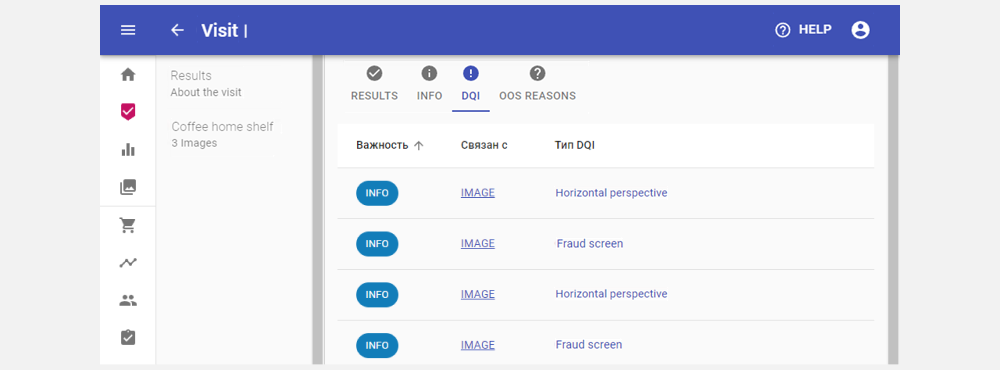
In addition, added DQI for sharpness, vertical and [horizontal perspective](/docs/portal/ visit/dqi#horizontal-perspective). Clicking on each of the DQIs in the portal will open the corresponding help with explanations.

Soon, we will test the thresholds and change them if the situation requires it.
DQI has also been added to the Data API. Now you can get a list of all DQIs on the portal, view information for a specific DQI. When [visit information] is received (/docs/api/backend/methods/v1/visits/visits_list), it will also contain DQI.
Panoramic photo stitching
The transition to panoramic stitching is almost completed. Pairwise gluing, which was used before, was performed at night and gave significantly worse results than panoramic.

This month in panoramic stitching:
- improved shelf gluing algorithm;
- fixed ordering of old shelves on the backend. Now they are formed taking into account the large gluing;
- optimized work and added shelves.